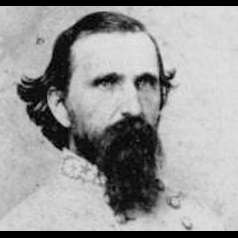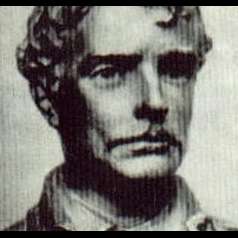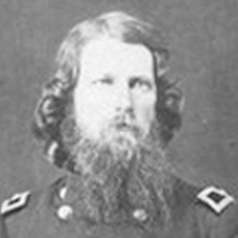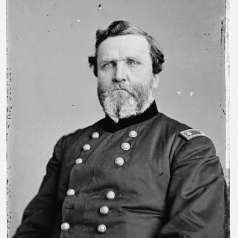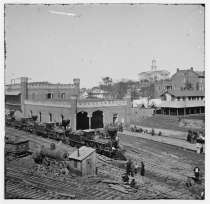
Born in 1819 in Connecticut, Photographer George Barnard spent most of his prewar years operating photography studios in Oswego and Syracuse, NY. After a move to New York City, Barnard became acquainted with another photographer who would become renowned for capturing the Civil War: Matthew Brady. During the war, Brady and Barnard spent the early war years working together in and around Virginia to capture the violence and destruction of the war. Barnard received an appointment with the Army of the Cumberland in the Topographical Branch of the Department of Engineers in 1863, travelled to Tennessee and began photographing the state’s Civil War landscape. From 1863 to 1864, Barnard extensively documented the city of Nashville, photographing the fortified Capitol, military use of the railroad, fortified railroad bridges, hospitals, and sweeping views of the city from the vicinity of capitol hill. Barnard also captured scenes in East Tennessee, including Lookout Mountain, Chattanooga, Fort Sanders, and Knoxville. In September 1864, Barnard moved to Atlanta after the city fell to Federal forces. It was in Atlanta that Barnard completed what became some of his most important work. As the army surveyed the topography and transportation routes, Barnard photographed the city of Atlanta. Roughly two months after Barnard’s arrival, November 12, 1864, Federal forces razed the city under orders from Gen. William T. Sherman. Barnard accompanied Sherman’s army as it embarked on the “March to the Sea” but, due to the rapid pace of the march, Barnard was unable to immediately photograph the devastation of total war. In the immediate postwar years, Barnard began preparing to release a published collection of images related to Sherman’s Campaign. He returned to Tennessee and Georgia, photographing the scenes he was unable to capture the first time through. After obtaining maps for the areas of interest, Barnard prepared and published 61 of his 1864 photographs in Photographic Views of Sherman’s Campaign. Barnard soon returned north and engaged in the photography business until his death in 1902.



